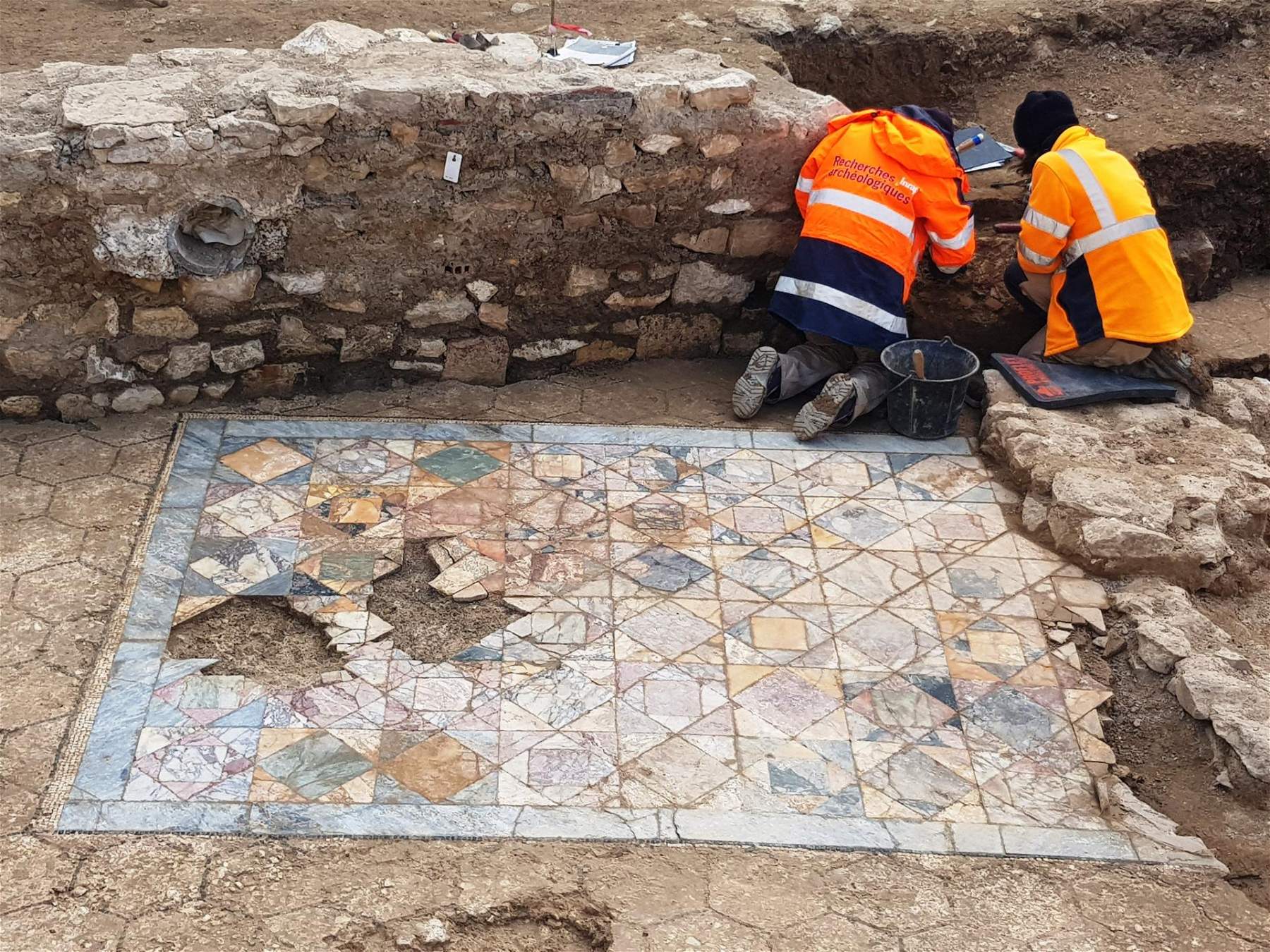France, major archaeological discovery in Nîmes: two rich Roman domus found
In France, the Institut Nationalde Recherches Archéologiques Préventives (INRAP, National Institute of Preventive Archaeological Research) has made an important discovery in Nîmes, Occitania: in the city’s historic center, in the district that corresponds to the forum of ancient Nemausus (this was the name of Nîmes in Roman times), about a hundred meters from the Maison carrée (symbol of the ancient city), two rich domus from the imperial age have been found.
The discovery came during excavations for a building to be constructed by the Cogedim construction group, which plans to build about fifty apartments in the area. The preventive archaeology excavation unearthed traces that had been identified through a diagnostic campaign conducted earlier by INRAP. The size of the two domus, however, exceeded the expectations of the INRAP archaeologists, and in addition, an excellently preserved reception hall was also found in one of the two dwellings, a rare occurrence for this area: traces of painted plasters were found (unfortunately in a fragmentary way, but not so much that some decorations could not be found, such as some painted candelabra on red and black panelling), and above all an opus sectile Floor, made with different types of marble to draw a kind of chessboard. The quality of the marble is such that one can imagine that the owner must have been one of the most important citizens of ancient Nemausus.
Experts have dated the domus to between the first and second centuries AD. Other interesting finds also emerged from the same excavation: cellars from an unspecified period, wall foundations from the 20th century, and most importantly, a medieval burial. The study of these remains will enable scholars to derive much important information about the changes that the urban fabric of Nîmes experienced over the centuries.
Pictured: the opus sectile floor. Ph. Charlotte Gleize / INRAP
 |
| France, major archaeological discovery in Nîmes: two rich Roman domus found |
Warning: the translation into English of the original Italian article was created using automatic tools. We undertake to review all articles, but we do not guarantee the total absence of inaccuracies in the translation due to the program. You can find the original by clicking on the ITA button. If you find any mistake,please contact us.



























